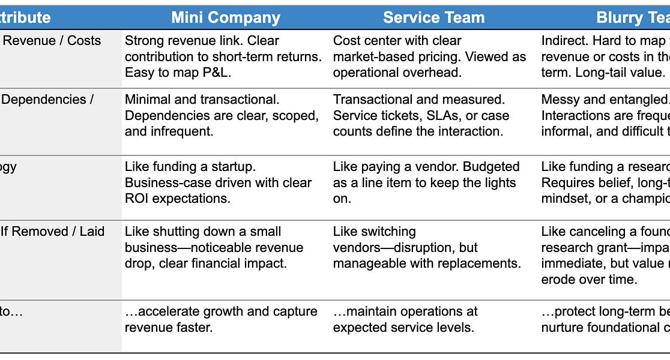The Beautiful Mess
1M
412

Image Credit: The Beautiful Mess
TBM 352: Funding, Planning, and Context
- The article discusses the importance of context in funding and planning as startups grow and mature.
- Different team types, stages, and shapes of work are explored to highlight the nuances in funding and planning approaches.
- Four distinct team contexts are outlined, including Company-In-A-Company, Service Team, Blurry Team, and Adhoc Project Team.
- The article emphasizes the significance of considering factors like team proximity to revenue, operational independence, traceability of impact, and replaceability.
- Various team stages are examined, leading to the understanding that different funding and hiring logic apply to teams at various developmental phases.
- Effort-Value Curves and Work Shapes are discussed to showcase how the value accrual and approach to work affect funding and planning decisions.
- The distinction between enabling a product and the product itself in the business model is highlighted, influencing funding and planning strategies.
- The article also addresses common anti-patterns in funding and planning, emphasizing the importance of forming a basic theory of investment for each team.
- The recommendation is to design customized planning and funding paths based on the context of each team, taking into account constraints, work shapes, and dependencies.
- The goal is to build a model that captures enough contextual nuance to be effective, fostering shared understanding and strategic alignment within organizations.
- Ultimately, the article asserts that planning and funding cannot be approached in a standardized manner but require an understanding of the unique context of each team and their contributions.
Read Full Article
23 Likes
For uninterrupted reading, download the app